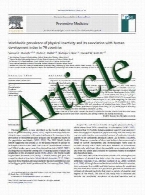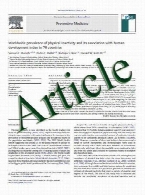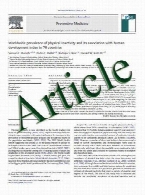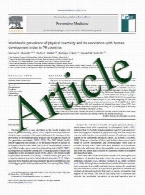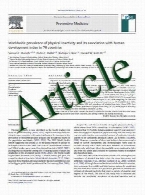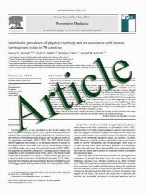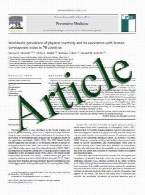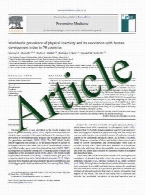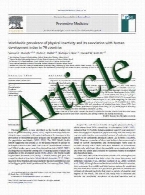

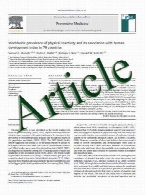
Angiogenesis in meningiomas
Acute vasomotor paralysis and p ...
Implantation of bare metal stents (BMS) induces the release not only of particulate debris, but also of soluble vasoconstrictors which contribute to ...
Unequal allelic expression of w ...
Familial hypertrophic cardiomyopathy (FHC) is an autosomal dominant disease, which in about 30% of the patients is caused by missense mutations in o ...
Class A scavenger receptor atte ...
Classically (M1) and alternatively (M2) activated macrophage subsets play differential roles in left ventricular remodeling after myocardial infarct ...
Coronary arterioles in type 2 d ...
Little is known about the impact of type 2 diabetes mellitus (DM) on coronary arteriole remodeling. The aim of this study was to determine the mecha ...
Failure to recapture cardioprot ...
The acute administration of atorvastatin has been reported to reduce myocardial infarct size in animal studies. However, this cardioprotective effec ...
Therapeutic neovascularization ...
Despite advances in surgical and percutaneous revascularization techniques, nearly one-third of patients with ischemic coronary artery disease are n ...
Interferon-gamma induced adipos ...
Interferon-gamma (IFNc) has previously been associated with immuno-mediated inflammation in dietinduced obesity and type 1 diabetes. This study soug ...
Burn-induced apoptosis of cardi ...
Survivin belongs to the family of genes known as inhibitors of apoptosis, and although it has been implicated in the prevention of cancer, its poten ...
Carbon monoxide exposure enhanc ...
Arrhythmias following cardiac stress are a key predictor of death in healthy population. Carbon monoxide (CO) is a ubiquitous pollutant promoting ox ...
RISK and SAFE signaling pathway ...
Local ischemic postconditioning (IPost) and remote ischemic perconditioning (RIPer) are promising methods to decrease ischemia–reperfusion (I/R) inj ...
Gene transfer as a strategy to ...
Extensive evidence indicates that heme oxygenase- 1 (HO-1) exerts potent cytoprotective effects in response to stress. Previous studies have shown t ...
Perfusion defect size predicts ...
Therapeutic cell retention and engraftment are critical for myocardial regeneration. Underlying mechanisms, including the role of tissue perfusion, ar ...
Gene transfer as a strategy to ...
The ultimate goal of prophylactic gene therapy is to confer permanent protection against ischemia. Although gene therapy with inducible nitric oxide ...
Circulating microparticles: new ...
Circulating microparticles released from various cell types are present in healthy individuals and the number and composition of their membrane vary ...
Intracellular [Na+] modulates s ...
Excitation–contraction coupling (ECC) in cardiac myocytes involves triggering of Ca2? release from the sarcoplasmic reticulum (SR) by L-type Ca chan ...
Tumor necrosis factor receptor ...
The in vivo role of TNF signaling in the genesis of b-adrenergic receptor (b-AR)-mediated cardiac hypertrophy is unknown. Wild-type (WT), TNF recept ...
Electromechanical effects of th ...
Activation of the atrial renin–angiotensin system plays an important role in the pathophysiology of atrial fibrillation (AF). The pulmonary vein (PV ...
Remodeling of inward rectifying ...
In rat atrial myocytes GIRK (Kir3) channels can be activated by acetylcholine and adenosine via M2 and A1 receptors coupled to Pertussis-toxin-sensi ...
Release of atrial natriuretic p ...
The present study investigates why shedding of the endothelial glycocalyx occurs both in patients undergoing on- and off-pump coronary artery bypass ...
Glioma-initiating cells and mol ...
There is now compelling evidence that gliomas harbor a small population of cells, termed glioma-initiating cells (GICs), characterized by their abil ...
CXCL12/CXCR4 signaling in malig ...
Chemokines are 8- to 12-kDa peptides that function as chemoattractant cytokines involved in cell activation, differentiation, and trafficking. Chemo ...
Angiogenesis and invasion in gl ...
Despite advances in surgical and medical therapy, glioblastoma consistently remains a fatal disease. Over the last 20 years, no significant increase ...
Genetic profile of astrocytic a ...
Low-grade diffuse gliomasWHOgrade II (diffuse astrocytoma, oligoastrocytoma, oligodendroglioma) are characterized by frequent IDH1/2 mutations ([80% ...
Angiogenesis in meningiomas
Neoangiogenesis has been correlated to biological aggressiveness and an adverse clinical course of several neoplasias. Its prognostic role in mening ...
High-throughput immunohistochem ...
Abstract Isocitrate dehydrogenase 1 (IDH1) mutations are common in grade II–III diffuse gliomas and secondary glioblastomas. The aim of this study i ...

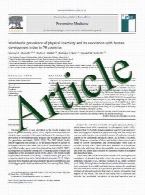
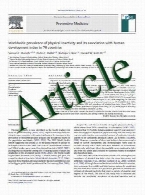
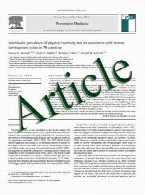
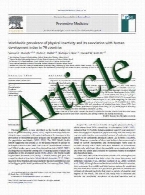
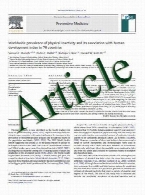
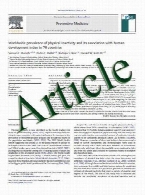
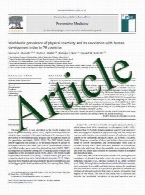
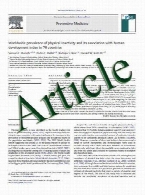

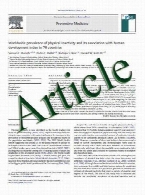
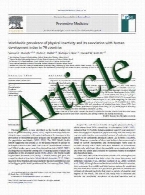
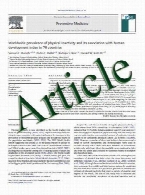
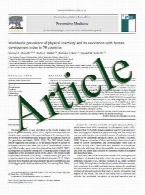
![Intracellular [Na+] modulates synergy between Na+/Ca2+ exchanger and L-type Ca2+ current in cardiac excitation–contraction coupling during action potentials](https://sim.maxiran.com/images/files/0168863-S-946923229.jpg)
